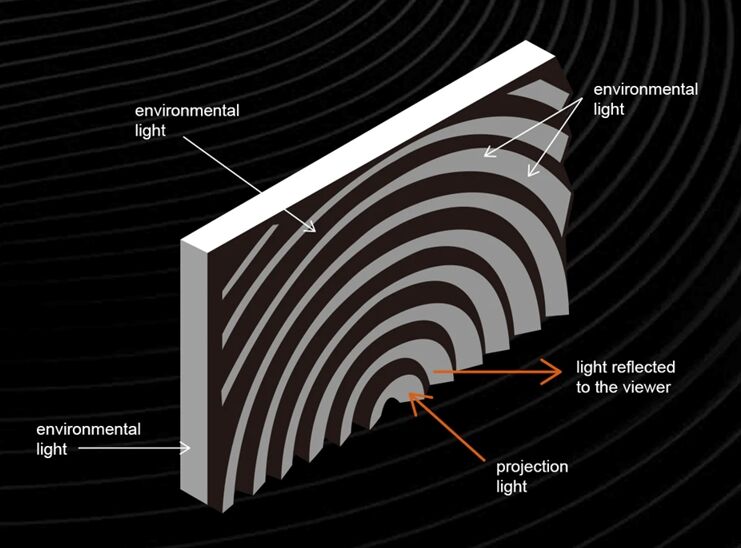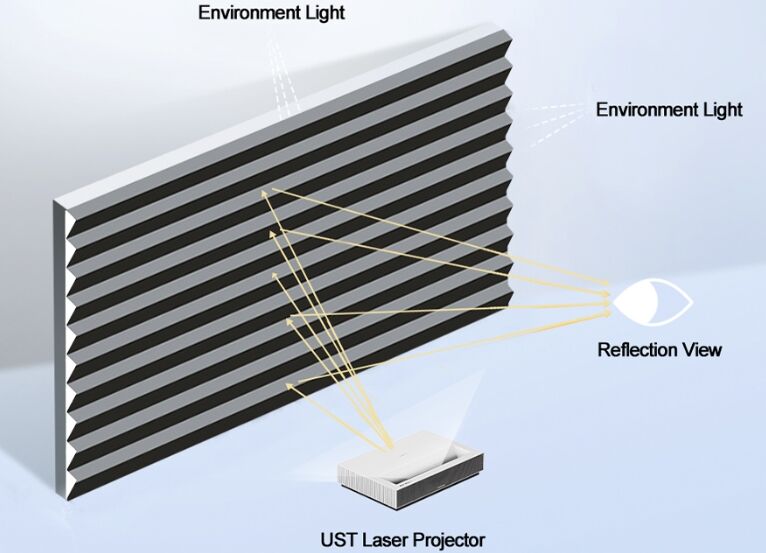When shopping for a projector screen, especially in environments with ambient light, you’ve probably come across two terms: ALR (Ambient Light Rejection) and CLR (Ceiling Light Rejection). While both are designed to improve image performance in bright settings, they are not interchangeable — and understanding the distinction is essential for choosing the right screen for your projector and room layout.
Let’s break down what each term really means, how they differ, and why the distinction matters more than ever in today’s projector screen market.
What is ALR (Ambient Light Rejection)?
ALR screens are designed to reject ambient light coming from multiple directions (side, top, or even behind) while reflecting light from the projector back to the viewer. This is achieved through optical filtering layers, reflective surface geometry, or directional coatings that minimize the washout caused by surrounding light.

What is CLR (Ceiling Light Rejection)?
CLR screens are a specialized type of ALR (Ambient Light Rejection) screen designed to block light coming from directly above, such as ceiling lamps or overhead lighting.
Unlike general ALR screens that target ambient light from multiple directions, CLR screens are specifically engineered to minimize the impact of top-down light, which is one of the most common causes of screen washout in modern indoor environments.

So… Is CLR the Same as ALR?
Technically, yes — CLR is a type of ALR, because ceiling light is just another kind of ambient light. So calling it ALR isn’t wrong.
But here’s the thing: not all ALR screens work the same way.
Peaock Evo ALR Fresnel Fixed Frame Screen for ultra-short-throw projector
